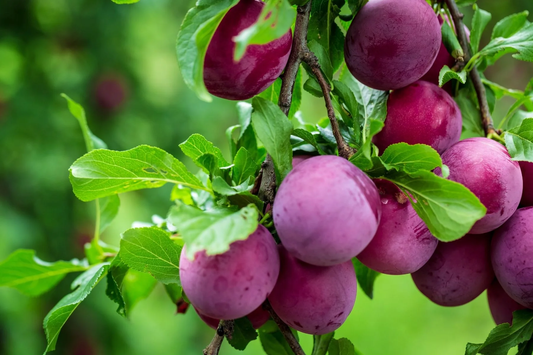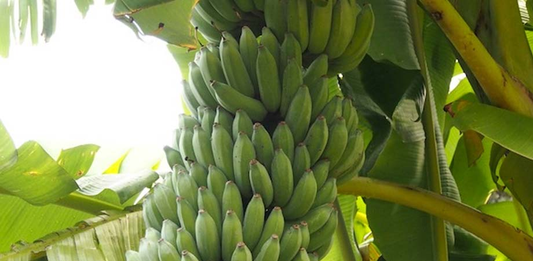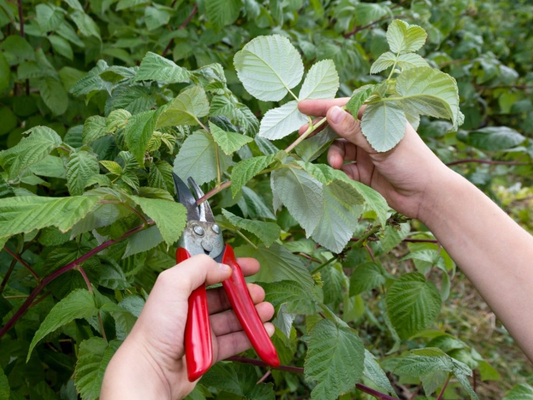How to Start a Community Garden: Make Your Town More Beautiful and Sustainable!
Share
Table of Contents
1. Introduction: The Power of Community Gardens
Community gardens are thriving spaces where neighbors come together to cultivate plants, share resources, and build stronger connections within their neighborhoods. They provide an opportunity for individuals of all backgrounds to work toward common goals while transforming unused or underutilized plots of land into vibrant green spaces. These gardens are not just about growing food, but about nurturing the community itself. In this blog, we will explore how starting a community garden can make your town more beautiful, sustainable, and socially connected.
The benefits of community gardens extend far beyond the immediate rewards of fresh produce. Here are some of the major advantages:
- Beautification: Community gardens transform vacant lots and neglected spaces into beautiful green areas that enhance the overall aesthetic of a neighborhood.
- Sustainability: By promoting local food production, reducing food miles, and encouraging eco-friendly practices such as composting and water conservation, community gardens contribute to a more sustainable future.
- Community Bonding: Gardens provide a platform for neighbors to come together, share ideas, and collaborate. They foster a sense of ownership and pride in the space, and can even reduce crime and social isolation.
- Health and Well-being: Growing fresh produce encourages healthy eating, while gardening itself can be a physical activity that reduces stress and promotes mental well-being.
This blog will guide you through the process of starting your own community garden, from planning and designing the garden to recruiting volunteers and managing the space. Whether you're a seasoned gardener or a newcomer, you'll find practical steps and helpful tips to create a thriving garden that brings your community together.
Let’s get started with the first step in creating your community garden!

2. Why Community Gardens Matter: Benefits for the Environment and Community
Community gardens are not only a way to grow food but also serve as powerful tools for improving the environment and strengthening communities. Whether you’re planting in an urban neighborhood or rural area, the impact of community gardens extends far beyond the garden gates. Let’s explore the numerous benefits they offer to both the environment and the community.
Environmental Benefits
- Urban Greenery: Community gardens introduce much-needed green spaces into urban environments, helping to combat the heat island effect and improving air quality. Green spaces also absorb rainwater, reducing the risk of flooding in urban areas.
- Reduction of Carbon Footprint: By growing food locally, community gardens reduce the need for long-distance transportation, helping to lower carbon emissions and reduce the carbon footprint of food production.
- Support for Pollinators: Gardens attract bees, butterflies, and other pollinators, which are essential for plant reproduction. This helps support local ecosystems and the biodiversity of urban areas.
- Promotion of Biodiversity: Growing a variety of plants in a community garden encourages biodiversity, creating habitats for birds, insects, and other wildlife, which enhances the local ecosystem.
Community Benefits
- Strengthening Community Ties: Community gardens bring people together, creating a shared space where neighbors can collaborate, interact, and form lasting relationships.
- Access to Healthy Food: These gardens provide fresh, nutritious produce to local residents, particularly in areas where access to fresh food is limited, helping to combat food insecurity.
- Reducing Food Insecurity: By growing food within the community, gardens can directly address food deserts, offering residents the opportunity to access affordable, healthy options.
- Educational Opportunity: Community gardens serve as educational hubs, where people can learn about gardening, sustainable practices, and healthy eating, fostering environmental stewardship and food literacy.
Economic and Social Impact
- Job Creation: Community gardens can create local employment opportunities, such as garden coordinators, educators, or farm-to-table market staff, which contributes to the local economy.
- Skill-building: Gardens offer residents the chance to develop a wide range of skills, from gardening and landscaping to project management and leadership.
- Fostering a Sense of Pride: Working together on a community garden helps foster a sense of pride and ownership in the neighborhood, which can improve overall morale and reduce crime rates.
As seen, community gardens provide significant benefits to both the environment and the people who live in the community. They act as a catalyst for social, economic, and ecological change, making them a valuable resource in any neighborhood.
3. Planning Your Community Garden: What You Need to Know
Planning is the foundation of any successful community garden. Before you break ground, there are several important factors to consider to ensure the space meets the needs of both the environment and the community. Let’s break down the key elements involved in the planning process:
Choosing the Right Location
- Sunlight: Choose a location that receives at least 6–8 hours of direct sunlight each day. Sunlight is crucial for the growth of most plants, particularly vegetables and flowers.
- Water Access: Ensure that the site has easy access to water, as plants will need consistent hydration, especially in the warmer months. Consider proximity to a hose, irrigation system, or water source.
- Soil Quality: Conduct soil tests to check for pH levels, drainage, and nutrient content. Good soil is key to healthy plants, so you may need to amend the soil with compost or other organic matter.
- Community Accessibility: The garden should be easily accessible to community members, especially those who may want to get involved. Ensure that the location is safe and welcoming for people of all ages and abilities.
Assessing Community Interest
Before moving forward with your garden, it's important to assess the interest and support from the local community. This will ensure the project’s success and sustainability.
- Conducting Surveys: Send out surveys to local residents to gauge interest in participating in the garden, what types of plants they would like to grow, and their level of commitment.
- Holding Meetings: Organize community meetings to discuss the garden’s potential, gather feedback, and involve people in the planning process.
- Partnering with Local Organizations: Collaborate with schools, churches, or local nonprofits to gain support and involve diverse groups in the garden.
Setting Goals for the Garden
It's important to define the purpose and goals of your community garden before you begin planting. Here are a few key decisions to make:
- What to Grow: Decide whether your garden will focus on growing food, flowers, or native plants. You can also mix these to create a diverse and attractive space.
- Purpose of the Garden: Think about the garden’s broader goals. Will it be an educational space, a place to beautify the neighborhood, or a food production hub for local families?
Budgeting and Funding
Starting a community garden requires financial planning. Here’s what to consider when budgeting:
- Cost Estimates: Estimate the costs for soil, tools, plants, seeds, and any infrastructure (e.g., fencing, benches). Don't forget about ongoing maintenance costs, such as watering and equipment repairs.
- Funding Options: Explore different funding options to cover initial and ongoing costs, including applying for grants, crowdfunding through platforms like GoFundMe, or seeking sponsorships from local businesses.

4. Designing Your Community Garden: Creating a Functional and Beautiful Space
Designing a community garden is a creative and thoughtful process that balances functionality with aesthetics. The layout and features you choose will shape the garden’s usability, beauty, and sustainability. Let’s explore the key design elements to consider when creating your garden space.
Garden Layout
The garden layout is one of the most important aspects to consider. It will determine how easy it is to grow plants, access the space, and maintain the garden. Here are some layout options:
- Raised Beds: Raised beds are ideal for gardeners who want to control soil quality and drainage. They are easy to maintain and provide clear boundaries for plants.
- Container Gardens: For limited space or mobility issues, container gardens allow for flexible planting. You can use pots, barrels, or other containers to grow vegetables, flowers, and herbs.
- In-ground Plots: In-ground plots are ideal for larger community gardens where space allows for traditional row planting. These require more soil preparation but can accommodate a variety of plants.
Accessibility and Pathways
Ensuring the garden is accessible to everyone, including those with disabilities, is essential for a successful community space.
- Wide Paths: Design paths that are wide enough for wheelchair users or strollers. Aim for paths that are at least 3 feet wide to ensure easy movement throughout the garden.
- Smooth Surfaces: Use materials like gravel, mulch, or paved paths to create smooth, stable surfaces. Avoid rough or uneven terrain that could cause tripping hazards.
- Clear Signage: Incorporate clear signage to guide visitors through the garden, including labels for different areas and plants, as well as maps for larger spaces.
Sustainable Practices
Incorporating sustainable practices into your garden design will help reduce environmental impact and promote long-term health for the space.
- Composting Areas: Set up designated composting areas where garden waste can be turned into nutrient-rich compost for future use in the garden.
- Water-Saving Irrigation Systems: Install drip irrigation or soaker hoses to minimize water waste and provide plants with consistent hydration without overwatering.
- Sustainable Building Materials: Use eco-friendly materials such as reclaimed wood, recycled plastic, or bamboo for garden structures like raised beds, trellises, and fences.
Creating Green Spaces for Relaxation
Community gardens are not just places for growing plants—they should also offer a space for relaxation and socialization.
- Benches and Seating: Include benches throughout the garden for visitors to rest, relax, or socialize. Comfortable seating encourages people to spend time in the garden.
- Shaded Areas: Create shaded areas using trees, pergolas, or trellises. These spots will provide refuge from the sun and offer a cool place to gather.
- Community Gathering Spots: Incorporate open spaces or a central gathering area where people can meet, host events, or enjoy the beauty of the garden together.
5. Assembling Your Team: Getting Volunteers and Organizing Roles
Building a successful community garden goes beyond just planting and watering—it requires a dedicated team of volunteers who are passionate about contributing to the garden's growth and sustainability. Here’s how you can assemble a motivated group of volunteers and assign clear roles to ensure the garden thrives.
Recruiting Volunteers
Finding enthusiastic volunteers is essential for the success of your community garden. Here are a few ways to engage your community and recruit help:
- Local Schools: Partner with nearby schools to encourage students and teachers to volunteer. This can be a great way to get younger generations involved in environmental stewardship.
- Local Businesses: Reach out to local businesses for sponsorship or to encourage their employees to volunteer. Businesses may be willing to offer incentives like gift cards or discounts for those who volunteer.
- Neighborhood Outreach: Engage with local residents directly by distributing flyers, attending neighborhood meetings, or posting on community bulletin boards to gather volunteers.
Assigning Roles
Clearly defining roles for your volunteers ensures that everyone has a specific responsibility and understands how they contribute to the garden’s success. Here are some common volunteer roles:
- Gardeners: Volunteers who will take on planting, weeding, watering, and maintaining the garden beds.
- Coordinators: Individuals who will oversee day-to-day operations, including organizing workdays and managing volunteer schedules.
- Event Planners: Volunteers who plan and organize events, such as garden tours, plant sales, or educational workshops.
- Maintenance Workers: Volunteers who will ensure the garden’s infrastructure, such as fences, sheds, and irrigation systems, are in good repair.
Building a Leadership Team
A leadership team is essential to ensure smooth operations and effective decision-making. Here’s how to build a strong team:
- Identify Key Leaders: Look for people who are passionate, reliable, and have leadership skills. They can help manage volunteers and make important decisions.
- Decision-Making Structure: Create a clear structure for making decisions, whether through group discussions, voting, or delegating authority to specific individuals.
- Accountability: Assign responsibility to each leader and hold them accountable for specific tasks, ensuring everything runs smoothly.
Regular Meetings and Communication
Keeping your volunteers informed and motivated is crucial to maintaining enthusiasm and momentum. Here are some tips for ongoing communication:
- Newsletters: Send out regular newsletters to keep volunteers informed about garden updates, upcoming events, and important announcements.
- Social Media: Use social media platforms like Facebook, Instagram, or Twitter to share updates, pictures, and encourage community involvement.
- Garden Meetings: Hold regular meetings to keep volunteers engaged, provide a space for feedback, and organize upcoming tasks or events.

6. Starting the Garden: Preparing the Soil and Planting Your First Crops
Starting your community garden involves careful planning and hands-on work, especially when it comes to soil preparation and selecting the right plants. By following these steps, you’ll create a solid foundation for healthy crops that thrive and contribute to the garden’s long-term success.
Soil Preparation
Healthy soil is the backbone of a thriving garden. Here’s how to assess and improve your garden’s soil:
- Assess Soil Quality: Start by testing your soil to understand its texture, drainage, and nutrient content. You can get a soil test kit from a local garden center or send a sample to a lab for detailed analysis.
- Improve Soil Quality: If your soil is poor in nutrients, you can amend it by adding organic matter such as compost, manure, or leaf litter. These additions will improve the soil's structure, drainage, and fertility.
- Test pH Levels: The pH level of your soil can greatly impact plant growth. Most plants prefer a slightly acidic to neutral pH (6-7). You can adjust pH levels using soil amendments such as lime (to raise pH) or sulfur (to lower pH).
Selecting Plants
Choosing the right plants is essential for a successful community garden. Consider the following when selecting plants:
- Climate Considerations: Choose plants that thrive in your local climate. Consider the average temperature, rainfall, and frost dates when selecting crops.
- Soil Type: Some plants prefer well-drained sandy soil, while others thrive in heavier clay soils. Choose plants that are suitable for your garden's specific soil conditions.
- Garden Goals: If the goal is food production, select crops that are easy to grow and have a quick harvest time. If you're focusing on beautification, consider flowers or native plants that attract pollinators.
Beginner-Friendly Crops
For new gardeners, it's essential to start with crops that are easy to grow and care for. Here are some great options for beginners:
- Tomatoes: A staple in many gardens, tomatoes are easy to grow and produce a high yield. They need full sunlight and regular watering.
- Herbs: Basil, parsley, and mint are great beginner herbs that require minimal care and can be harvested frequently.
- Leafy Greens: Lettuce, spinach, and kale are fast-growing and perfect for cooler climates. These crops can be planted early in the season.
- Carrots: Carrots thrive in loose, well-drained soil and are a good crop for beginner gardeners looking for quick results.
Table: Pros and Cons of Various Community Garden Crops
| Crop | Pros | Cons |
|---|---|---|
| Tomatoes | High yield, easy to grow, versatile in dishes | Vulnerable to pests, need full sun, require consistent watering |
| Herbs | Low maintenance, perfect for small spaces, adds flavor to meals | May spread quickly, some varieties are invasive |
| Leafy Greens | Fast-growing, good for cooler climates, easy to harvest | Vulnerable to pests like aphids, bolting in hot weather |
| Carrots | Great for beginners, suitable for small spaces, fun to harvest | Require loose, well-drained soil, sensitive to pests |
Planting and Care
Once your soil is prepared and your plants are selected, it’s time to plant and care for your garden. Here are some tips:
- Planting Schedules: Follow the recommended planting schedules for each crop, based on your local climate and last frost dates. Early planting may yield faster harvests.
- Watering Tips: Water your plants consistently, ensuring the soil stays moist but not waterlogged. Consider using a drip irrigation system to conserve water and ensure even distribution.
- Mulching: Apply mulch around plants to retain moisture, suppress weeds, and regulate soil temperature. Organic mulches like straw or shredded leaves work well.
- Initial Maintenance: Keep an eye on your plants for signs of pests or diseases. Early intervention can prevent larger issues later on. Regularly weed the garden to prevent competition for nutrients.
Involving the Community
Starting the garden is the perfect opportunity to involve the community. Engaging local residents during the planting phase fosters ownership and connection to the garden. This collaborative spirit strengthens relationships and encourages long-term investment in the garden’s upkeep.

7. Maintaining the Garden: Ensuring Long-Term Success
Maintaining a community garden requires consistent effort to ensure its long-term success. Regular care and upkeep help plants thrive, protect the garden from pests, and maintain healthy soil. Here’s how to keep your garden flourishing year-round.
Ongoing Care
To keep your garden productive and healthy, it's crucial to stay on top of regular care tasks:
- Watering Schedules: Regular watering is essential for plant growth. Depending on the weather and plant needs, watering may need to be done daily or weekly. A drip irrigation system can help ensure consistent water distribution.
- Fertilizing: Fertilizing your garden every few weeks with organic compost or other natural fertilizers helps replenish essential nutrients in the soil. Tailor your fertilizer choices to the specific needs of your plants (e.g., high-nitrogen fertilizer for leafy greens).
- Pest Management: Keep an eye on pests and disease. Use organic pesticides, introduce beneficial insects, or employ manual methods (e.g., handpicking bugs) to manage pests naturally.
- Seasonal Maintenance: Seasonal tasks like mulching, pruning, and protecting plants from frost are vital. During winter months, be sure to cover or mulch plants that are sensitive to the cold to ensure they come back strong in spring.
Composting
Composting plays an essential role in creating a sustainable garden. It reduces waste while enriching the soil. Here's how you can incorporate composting:
- Waste Reduction: Composting organic waste (e.g., fruit and vegetable scraps, leaves, grass clippings) reduces landfill waste and provides valuable nutrients back to the garden.
- Soil Enrichment: The compost you produce helps improve soil structure, drainage, and nutrient content. It also increases microbial activity, which is essential for plant growth.
- Creating a Composting System: Set up a composting bin or pile in a corner of the garden. Ensure that it is well-aerated and contains a balanced mix of green (nitrogen-rich) and brown (carbon-rich) materials.
Rotating Crops
Crop rotation is an important practice for maintaining healthy soil and reducing pest problems:
- Soil Depletion: Growing the same crops in the same soil year after year can deplete essential nutrients. Rotate crops to prevent this and maintain soil health.
- Pest Reduction: Rotating crops helps prevent pests from becoming established, as many pests are plant-specific. Changing the location of crops keeps them guessing!
- Plan Your Rotation: Create a rotation plan that groups plants by their nutrient needs (e.g., legumes, which fix nitrogen, should follow heavy feeders like tomatoes or corn).
Maintaining Garden Tools
Garden tools are an investment, and keeping them in good working order ensures they last longer and perform efficiently:
- Cleaning Tools: After each use, clean tools to remove dirt, plant debris, and sap. This prevents rust and keeps them in working condition.
- Sharpening Blades: Regularly sharpen tool blades (e.g., hoes, pruners, shovels) to ensure they cut cleanly and efficiently. Dull blades can damage plants and make tasks harder.
- Storage: Store tools in a dry, sheltered area to prevent rusting. Hanging tools or storing them off the ground can help preserve their condition.
8. Building Community Engagement: Keeping People Involved
Building strong community engagement is crucial for the long-term success of a community garden. Keeping people motivated and involved fosters a sense of ownership and ensures continuous support. Here are some ways to maintain community involvement:
Regular Events
Hosting regular events is an effective way to keep community members engaged and connected with the garden:
- Workshops: Organize gardening workshops where participants can learn new techniques, like composting, pest control, or soil improvement. These events can be geared towards all experience levels, from beginners to seasoned gardeners.
- Planting Events: Plan planting days where volunteers come together to plant new crops, flowers, or trees. This can be a fun, social activity that promotes teamwork and garden growth.
- Harvest Celebrations: Host harvest festivals to celebrate the fruits of your labor. These events can include food tasting, cooking demonstrations, or a simple community meal using the produce grown in the garden.
- Volunteer Days: Hold regular volunteer days where people can contribute to maintaining the garden. These days can focus on tasks like weeding, watering, or fixing up garden infrastructure.
Educational Outreach
Educating the community is key to fostering a deeper connection with the garden and gardening practices:
- Gardening Tips and Tutorials: Provide valuable gardening tips through newsletters, social media posts, or community events. Share advice on topics like soil health, pest management, and seasonal gardening.
- Beginner-Friendly Programs: Offer beginner gardening programs to encourage new gardeners to get involved. These can cover the basics of plant care, composting, and growing food in small spaces.
- Garden Tours and Demonstrations: Organize guided garden tours where people can learn about different plants, growing methods, and sustainable practices. This offers a hands-on educational experience.
Collaborating with Local Organizations
Partnerships with local organizations can expand the reach and impact of the garden:
- Schools: Collaborate with local schools to provide students with opportunities to learn about gardening, sustainability, and nutrition. School visits to the garden can be both educational and inspirational.
- Community Centers: Partner with community centers to host events or provide garden space for local residents. This can also include after-school programs or gardening classes for children and adults.
- Local Businesses: Work with local businesses to sponsor garden events, provide donations, or support with materials and tools. This can also include promoting the garden through their channels.
Celebrating Successes
Sharing the garden's successes helps build pride and excitement in the community:
- Newsletters: Send out regular newsletters to update community members on garden progress, upcoming events, and harvest reports. This keeps everyone informed and engaged.
- Social Media: Use social media platforms to showcase the garden’s milestones. Post pictures of events, new plantings, or successful harvests to keep followers connected and engaged.
- Local Press: Reach out to local newspapers or radio stations to share the story of your community garden. Public recognition brings more visibility and encourages broader participation.

9. Overcoming Challenges: Common Obstacles and How to Tackle Them
Starting and maintaining a community garden comes with its fair share of challenges. Whether it's limited space, conflict among gardeners, weather conditions, or legal issues, addressing these obstacles proactively can ensure the garden's success. Here are some common challenges and strategies to overcome them:
Dealing with Limited Space or Resources
Many community gardens face the challenge of limited space or resources. However, creative solutions can maximize available space:
- Vertical Gardening: Use vertical structures such as trellises, towers, or hanging planters to grow climbing plants like beans, cucumbers, and tomatoes. This allows you to make the most of vertical space.
- Container Gardens: Utilize containers, pots, or raised beds to grow plants in small spaces. Containers can be placed in areas like sidewalks, patios, or balconies to expand your growing area.
- Donated Materials: Look for donations of unused building materials like wood, bricks, or compost. This can help you build raised beds or create garden structures at minimal cost.
Managing Conflicts
In any shared space, conflicts can arise. Addressing these early on can help maintain a positive garden environment:
- Clear Garden Rules: Set clear, written rules for all gardeners to follow, such as hours of operation, maintenance duties, and shared space responsibilities.
- Regular Communication: Hold regular meetings where gardeners can voice concerns, suggest improvements, and agree on garden plans.
- Conflict Mediation: If conflicts arise, encourage open dialogue or appoint a neutral mediator to help resolve issues fairly.
Weather and Climate Challenges
Weather conditions can be unpredictable and may impact plant growth. Prepare for extreme weather by:
- Watering Systems: Install drip irrigation or soaker hoses to help conserve water during droughts.
- Weather Protection: Use shade cloths, row covers, or windbreaks to protect plants from extreme temperatures or storms.
- Resilient Plants: Choose plants that are well-suited to your climate to reduce the impact of unpredictable weather.
Legal and Zoning Issues
Before starting a community garden, it's important to navigate local regulations:
- Research Local Zoning Laws: Check with local government offices to understand zoning laws or any restrictions on land use for gardening purposes.
- Land Ownership: Ensure you have permission from property owners, whether the land is privately or municipally owned.
- Permits and Licenses: Depending on your location, you may need permits for water use, gardening structures, or public gatherings.
10. The Future of Community Gardens: Sustainability and Growth
Community gardens are not only a valuable asset to neighborhoods but also a growing trend in creating sustainable, vibrant communities. Looking ahead, the future of community gardens will involve expansion, the adoption of sustainable practices, and an even greater positive impact on the surrounding community.
Expanding the Garden
Once your community garden is successfully established, you may want to scale it up or start new gardens in other areas. Here are some strategies for expansion:
- Collaborate with Local Organizations: Partner with schools, local businesses, or other community groups to create additional gardens in different locations.
- Leverage Additional Spaces: Look for underused public spaces such as vacant lots, rooftops, or community centers to transform into new garden areas.
- Engage More Volunteers: As your garden grows, recruit more volunteers to help manage additional space and maintain the expanded garden.
Sustainable Practices for the Future
In the future, it's crucial to adopt sustainable gardening practices that help conserve resources and protect the environment. Some ways to ensure long-term sustainability include:
- Water Conservation: Implement rainwater harvesting systems and drip irrigation to reduce water usage.
- Native Plants: Prioritize native plants that are well-suited to your local environment and require fewer resources to thrive.
- Eco-friendly Methods: Use organic pest management, mulching, and composting to reduce chemical usage and increase soil health.
Impact on the Community
The impact of community gardens goes beyond growing plants; they help build stronger, more connected neighborhoods. The positive effects include:
- Social Bonds: Strengthening relationships between neighbors, fostering a sense of pride and ownership.
- Inspiration for Other Towns: A successful community garden can inspire other communities to start their own gardens, creating a ripple effect of sustainability and community growth.
- Health Benefits: Increased access to fresh, healthy food and outdoor spaces improves overall well-being in the community.
11. FAQ - Frequently Asked Questions
Starting a community garden is an exciting and rewarding endeavor, but it comes with a few questions. Below are answers to some of the most frequently asked questions that can help guide your community garden project.
1. What are the costs involved in starting a community garden?
The costs of starting a community garden vary depending on size, location, and the types of plants you plan to grow. Key expenses include soil preparation, tools, plants, watering systems, and ongoing maintenance. It's also important to budget for infrastructure like pathways, fences, or raised beds. You can reduce costs by seeking donations or partnering with local organizations for funding.
2. How do I involve my neighbors in a community garden project?
Engage your neighbors by hosting informational meetings, surveys, or social events to gauge interest. Consider creating a volunteer committee to allow people to take on roles that match their skills and interests. Social media and neighborhood newsletters are also effective tools for spreading the word and encouraging participation.
3. Can a community garden be started on private land?
Yes, a community garden can be started on private land with the property owner's consent. It's important to establish a formal agreement outlining roles, responsibilities, and expectations for all parties involved. This ensures the project is clear and sustainable.
4. What plants are easiest to grow in a community garden?
Beginner-friendly plants include leafy greens (such as lettuce and spinach), herbs (like basil and mint), tomatoes, and carrots. These plants thrive in various conditions and tend to be less maintenance-intensive, making them perfect for new gardeners.
5. How do we handle disagreements or conflicts within the garden?
Conflicts are a natural part of any shared space. To resolve disagreements, establish clear rules and guidelines for garden usage and maintain open communication among gardeners. It's also helpful to have a leadership team to mediate disputes and ensure fair decision-making.
6. How do I find funding for my community garden project?
Funding for community gardens can come from multiple sources, including grants, crowdfunding, local businesses, and community organizations. Look for government or non-profit grants that support sustainability and community development. You can also host fundraising events or seek donations from local sponsors.
Additional Resources
Want Bigger Pumpkins? Here’s Exactly How to Grow Pumpkin Seeds to Maxi – XRoci
How to Care for Indoor Plants During Summer: Avoid These Common Mistak – XRoci
Grow Delicious Fruits in Small Spaces: Buy Dwarf Fruit Trees Online To – XRoci




